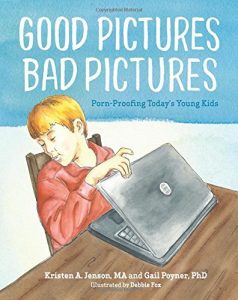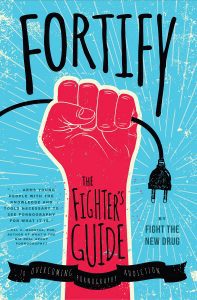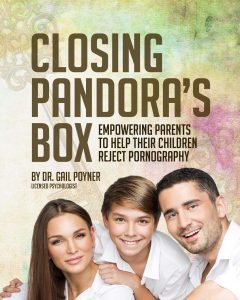Protect Your Family
Protect Your Family
Websites for Parents
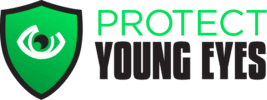
1. Protect Young Eyes – www.protectyoungeyes.com
• The majority of their content is bundled in their App, Protect: Internet Safety, which includes a large quantity of short lessons for parents to educate themselves,
videos to share with children according to age, guidance on difficult conversations, etc.
• The website includes a helpful Parental Controls page which provides basic information and an assessment of possible dangers of a large number of apps and devices to help keep parents informed.
• A Resources page also recommends software and devices for internet safety—to include, for example, smartphones without internet access.
2. Defend Young Minds – https://www.defendyoungminds.com/
• Provides books, guides, and a digital curriculum for parents to teach their children about pornography and other things to watch out for with technology use (such as cyberbullying, screen time, etc.).
3. Covenant Eyes (for Parents)
• Although much of Covenant Eyes is dedicated to adults struggling with addiction, this page on their website provides helpful things to keep in mind and practical steps that can be taken by parents who have realized that their children have been exposed to pornography.
• Their primary resource, software which gives an accountability partner snapshots of your online activity (and which also includes safe search and filtering tools),
might also be used by families.
Web Filtering
1. Qustodio – www.qustodio.com
• Filtering and Accountability software with versions for several software platforms
• Expensive but simple to use with comprehensive reporting and management tools.
2. NetNanny – www.netnanny.com
• Good value and well-reviewed; robust filtering of content.
• Tools such as social media monitoring require additional purchase.
Books for Parents and Children
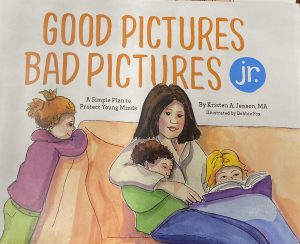
1. Good Pictures Bad Pictures Jr.: A Simple Plan to Protect Young Minds – Kristen A. Jenson
• Appropriate to read with young children (5+).
• Teaches children a simple definition of pornography (“bad pictures”) and a simple drill to use when they are encountered: to turn away, run to a parent, and tell.
• Using this “drill” will allow parents to respond to exposure the moment it comes up: giving them the chance to positively reinforce their child’s honesty and to help children differentiate between appropriate and inappropriate images beyond the simple definition given in the book.
• Avoids any discussion of sex.
• The term “pornography” is written once as a “big word” used by adults for bad pictures.
2. Good Pictures Bad Pictures: Porn Proofing Today’s Young Kids – Kristen A. Jenson
• Appropriate to read with children about 7 and older.
• Teaches children a basic definition of pornography while also teaching why it is addictive and dangerous and a game plan to avoid it.
• Avoids any discussion of sex.

3. Plunging Pornography – D.J. Hueneman
• Aimed at teenagers who have been exposed to or are aware of pornography.
• Largely informational, explaining the realities and dangers of pornography and
how to combat it. Content is clear and includes many statistics.
• As a fair warning: although this is a good, practical resource, its presentation is gimmicky and may understandably prove unappealing.
4. Fortify: The Fighter’s Guide to Overcoming Pornography Addiction – Fight the New Drug
• Aimed at teenagers and young adults with an addiction to pornography.
• Its approach is science-based, avoiding any discussion of faith, but it advocates
virtue and authentic love.
• This book is more of a self-led program than just a read: it is made to guide
readers through moments of self-reflection and action items in their lives.
5. Closing Pandora’s Box – Gail Poyner, Ph.D.
• Intended for parents of children who have been exposed to pornography.
• Provides information about pornography, how it entices children and affects them, and how parents can help children who have been exposed.





